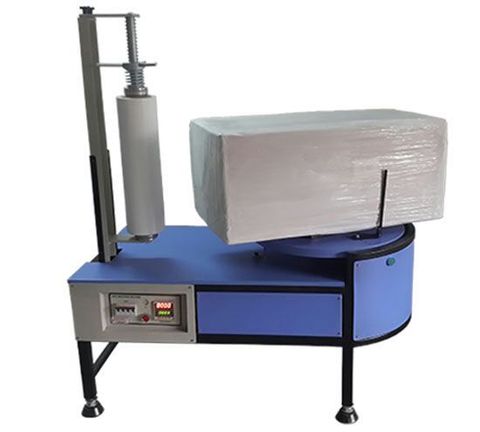Essential Factors to Consider When Shopping for Smart Furniture: A Complete Guide for Modern Homes
Smart furniture refers to household furniture equipped with integrated technology that enhances convenience, comfort, and functionality. It exists because modern homes increasingly rely on digital tools to simplify daily life, improve space efficiency, and support smart living environments. From connected lighting systems integrated into tables to beds with automated adjustments, these innovations blend traditional furniture design with emerging technology.
The rise of compact urban living, remote work, and digital lifestyles has encouraged furniture designers to integrate features such as wireless charging, built-in speakers, smart sensors, touch controls, and energy-efficient systems. Smart furniture is now a part of broader smart home ecosystems that include lighting, environmental controls, and entertainment systems.

Importance
Smart furniture matters today because it supports evolving lifestyle needs, particularly in environments where convenience and efficiency are essential. Key advantages include:
-
Space optimization: Smart designs help maximize space in apartments and smaller homes through multifunctional features.
-
Improved comfort: Features like adjustable beds and ergonomic smart desks support health and well-being.
-
Enhanced connectivity: Integration with smart home systems helps streamline everyday routines.
-
Energy management: Some furniture includes sensors that optimize power usage or automate functions.
-
Accessibility: Smart features can support older adults or individuals with mobility challenges.
Smart furniture benefits homeowners, renters, remote workers, students, and families seeking practical ways to enhance their living spaces. It solves common household challenges, such as clutter, limited space, and inefficient daily routines.
Recent Updates
Over the past year (2024–2025), several noteworthy updates and trends have emerged in smart furniture development:
-
AI-enhanced furniture (2025): Some designs now incorporate artificial intelligence for personalized adjustments, such as chairs that correct sitting posture or beds that modify firmness based on sleep patterns.
-
Sustainable materials focus (2024): Many brands have shifted toward eco-friendly materials like recycled wood or biodegradable components, used in combination with smart systems.
-
Growth of connected office furniture (2025): Remote and hybrid work arrangements increased demand for intelligent desks with height memory, sensor-based reminders, and integrated charging stations.
-
Wireless power integration (2024): More smart tables and nightstands now support wireless charging surfaces for multiple devices.
-
IoT interoperability (2024–2025): Smart furniture increasingly supports integration with major smart home ecosystems such as Google Home, Apple Home, and Alexa for unified control.
-
Health-focused innovations (2025): Smart recliners and ergonomic chairs with pressure mapping, posture sensing, or heart rate monitoring are becoming more common.
These developments reflect a shift from simple connectivity to multifunctional solutions that improve wellness, productivity, and living standards.
Laws or Policies
Regulations related to smart furniture vary by region but generally emphasize safety, electrical compliance, and data protection:
-
Electrical safety standards: Smart furniture with powered components must comply with local electrical codes, such as UL certification in the U.S. or CE marking in the EU.
-
Fire safety regulations: Upholstered smart furniture must meet national flammability standards to ensure household safety.
-
Wireless communication rules: Devices must comply with radio-frequency regulations governed by agencies such as the FCC in the United States and ETSI in Europe.
-
Energy efficiency guidelines: Some countries promote the use of low-power systems within smart consumer products.
-
Data protection policies: Smart furniture that collects usage data must follow privacy laws such as the GDPR (EU) or CCPA (California), particularly when sensors gather behavioral information.
Governments worldwide continue to expand smart home guidelines to ensure safety, environmental responsibility, and consumer protection.
Tools and Resources
A variety of tools and digital resources can help users understand, evaluate, and select smart furniture:
-
Home layout planning apps: Tools such as RoomSketcher and Planner 5D help visualize how smart furniture fits into a room.
-
Smart home integration apps: Google Home, Apple Home, and Alexa applications allow users to check compatibility and manage connected furniture.
-
Energy monitoring tools: Smart plugs and home energy apps help track power usage of connected furniture components.
-
Ergonomics calculators: Online tools provide recommended desk heights, posture guidelines, and workspace layout ideas.
-
Interior design platforms: Websites like Houzz and Pinterest offer inspiration for integrating technology-enhanced furniture.
-
Product comparison tools: Tech review platforms and consumer electronics databases list compatibility, features, and engineering details for smart furniture systems.
Example Table: Common Smart Furniture Features and Their Benefits
| Feature | Description | Benefit |
|---|---|---|
| Wireless charging surfaces | Built-in power pads for devices | Reduces clutter and promotes organization |
| Adjustable smart desks | Motorized height settings with memory | Improves ergonomics for remote work |
| Smart beds | Automated firmness, sensors, lighting | Supports sleep quality and comfort |
| Integrated lighting systems | LED task or ambient lighting controls | Enhances mood and room efficiency |
| Smart storage solutions | Cabinets or closets with automated access | Optimizes home organization |
FAQs
What is smart furniture?
Smart furniture refers to furniture that incorporates technology such as sensors, connectivity, automation, or integrated digital systems to enhance convenience, comfort, and functionality.
Is smart furniture compatible with all smart home systems?
Not all pieces are universally compatible; most work best with specific ecosystems like Google Home, Alexa, or Apple Home. Checking integration details is an important step before choosing a product.
Does smart furniture require regular maintenance?
Basic maintenance is similar to traditional furniture, but electronic components may require occasional updates or inspection for proper function. Apps often provide notifications for firmware updates.
Are smart desks and chairs beneficial for health?
Smart desks and ergonomic chairs can encourage better posture, promote movement, and support overall comfort, especially during prolonged work periods.
Can smart furniture help reduce energy usage?
Some pieces include sensors or automated shut-off functions that help reduce unnecessary power consumption, contributing to energy-efficient home environments.
Conclusion
Smart furniture is transforming how people design and experience their homes. With its blend of technology, flexibility, and thoughtful design, it supports the evolving needs of modern living by enhancing comfort, improving organization, and integrating seamlessly with smart home systems. Recent developments in energy efficiency, AI features, and sustainability demonstrate how rapidly this segment is growing.
Understanding regulations, key features, and available digital resources can help individuals make informed decisions that align with their lifestyle and home environment. As smart living continues to expand, smart furniture will remain an essential element of future-ready households.





